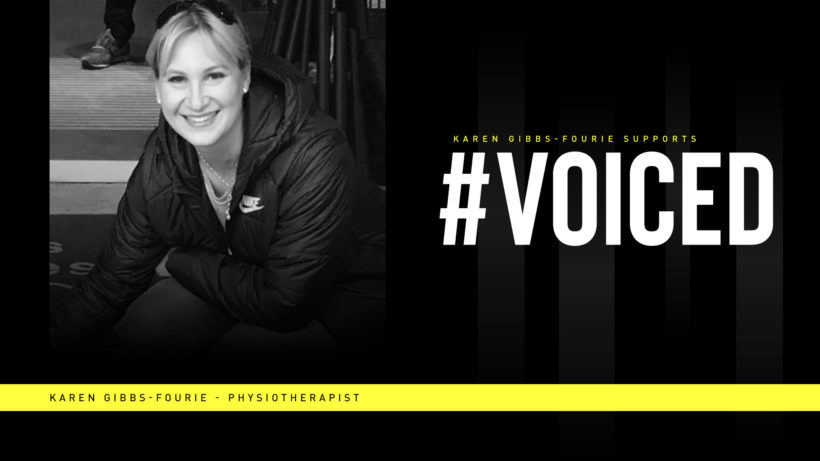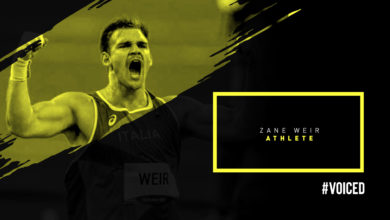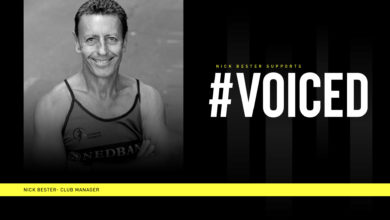Country: South Africa
Profession: Physiotherapist
Karen has worked with various South African Olympians and World Champions, often travelling with athletes to major events such as the World Championships, Athletics World Cup, African Championships and Commonwealth Games. She was the team physiotherapist for Team South Africa at the 2018 World Indoor Athletics Championships.
After graduating in 2001 she spent nine years working in the UK and Germany, and then came back to South Africa to focus on her main interest, sports physiotherapy. She is currently in private practice in Pretoria – with a special interest in the use of the McKenzie and various fascial techniques to treat and prevent acute and chronic injuries.
What are the common injuries in Track and Field athletes and why do athletes get these injuries so often?
It largely depends on the event the athlete participates in. With the sprinters we normally see injuries to the structures responsible for managing high loads, like the muscles and the tendons. The hamstring complex is always particularly vulnerable in sprinters and hurdlers, simply because it has to balance the much more powerful muscles at the front of the body. Whereas ankle injuries such as ligament tears and tendon tears/strains tend to be more prominent with jumpers. With the overhead throwing athletes, we see more elbow and shoulder and even neck pathologies, often related to the joints and the nervous system. And to me, any heptathlete or decathlete borders on being superhuman, since they have to navigate all of these different injury patterns!
But when you talk about elite sport, the unfortunate reality is that injuries are part of the game. To perform at that top level, athletes are required to push their bodies to the absolute limits – it’s logical that they will sometimes push beyond their bodies’ capabilities at any given moment. Research has shown that there are so many variables involved in why athletes get injured, that to give any one reason for why they occur would be too simplistic. In general, injuries occur due to amongst others, faulty biomechanics, incorrect or insufficient conditioning, inadequate recovery strategies, incorrect load management and even fear – to name but a few. And as more research comes out, we are being confronted with having to ask ourselves if it’s even possible to prevent injuries completely, since all of these factors can be completely specific to each athlete. So, what works for athlete X will not necessarily work for athlete Y. Which is why it’s important to have a good knowledge and history of the athlete in front of you. Hopping between therapists is not a great idea for elite athletes, your physio learns how your body works alongside you, which leads to more effective management in the long run as mechanical patterns become clear.
What are the three common misconceptions about physiotherapy?
Oh what a good question! Firstly, I’d say it’s the perception that physios only treat injuries. Physiotherapists are actually highly trained movement specialists and it’s often only when we are given an opportunity to work closely with coaches and trainers that we realise how much we can contribute in this regard. As such, we can add notable value to conditioning programmes and determining safe loading volumes. In addition, very often a blip in technique has a mechanical reason and experienced physios can often identify the mechanical restriction responsible for the technique issue that’s driving the coach mad. Secondly, I’d say it’s the idea that physios only do massage. Yes, soft tissue work forms part of what is required at times, but there are many problems that do not require this and can be sorted without the physio actually having to touch the athlete. Indeed, sometimes the better the physio, the less the need for all the bells and whistles and treatment gadgets. Finally, I’ll say that I never like the perception that physios ‘fix’ athletes. The human body is quite capable of fixing itself, all we need to do is identify the obstacles in the way of it fixing itself. I’d like to think it’s the physio’s job to help remove these obstacles, so that the athlete’s body can reset and heal itself where needed.
What role does physiotherapy play in improving an athlete’s performance?
An athlete has to put in the work on the track or field. There are some exceptional athletes who can walk into competition with minimal training and perform, but these are the unicorns. Most athletes have to work hard to build resilience and condition correctly. That progressive conditioning becomes problematic when it’s constantly interrupted by injuries or niggles. So to me, physios have a huge responsibility to reduce the athletes risk for injury as much as possible (it’s sadly never zero) so that they can get the most out of every session with their coach on the track – because that’s where they get faster or train to jump higher or throw further. I’m personally particularly passionate about understanding what each different sport requires from an athlete’s body from a biomechanical perspective and to then hone in on those requirements to see if we can get the body to function optimally for that particular sport, whether it be through assisting with specific strengthening or avoiding certain compensatory movement patterns. At the top level even a 1% improvement in technique or power can be the difference between winning or losing a medal.
And then lastly, all injuries have a certain prognosis, meaning how long it should take for the athlete to return to the track. The better an athlete is managed after an injury, the faster they’ll return within the ideal timeframe for that specific injury, the less of their overall conditioning and race fitness they will lose, and the smaller the impact will be on their performance curve throughout the season.
What piece of advice do most athlete tend to ignore?
To listen to your body. It never ceases to amaze me how often athletes get injured and then admit afterwards that they knew they were in trouble before the training session or the race, yet went ahead anyway. I think there’s still an underlying perception that to admit that you are in pain or struggling is a sign of weakness, to be ignored. I always try and tell the athletes I work with to rather moan and let me check all is ok, as opposed to staying quiet and then realise too late that you should have spoken up.
How has the access to physiotherapy treatment and services improved over the last 5 years?
I’d say that would depend on where you live. There are so many physiotherapy techniques which don’t require a hands-on approach, and the explosion of therapeutic videos or self-treatment videos on YouTube and Instagram has definitely made many of these techniques accessible to people who don’t ordinarily have a physio on speed dial, even if the results won’t always be optimal. From the last 3 years on the international athletics circuit, it’s also been interesting to see the increase in athletes who choose to travel with their own physio, which really should not be considered a luxury, but a necessity at an elite level.
Simply speaking from a personal perspective in South Africa, the access to these services for young upcoming athletes is still less than ideal. For a promising juvenile athlete to transition to a professional, it’s essential that they are managed very well from both a coaching as well as a medical perspective as soon as they show promise. Too many talented young athletes are lost along the way due to overtraining or badly managed injuries, which interrupts their natural improvement trajectory. I love getting involved with the management of young athletes early – it means we can properly advise and guide how to balance the demands of training with a still developing physique, stop bad mechanical habits from forming and essentially, help the athlete to build the foundation for a sustainable career in the sport.


